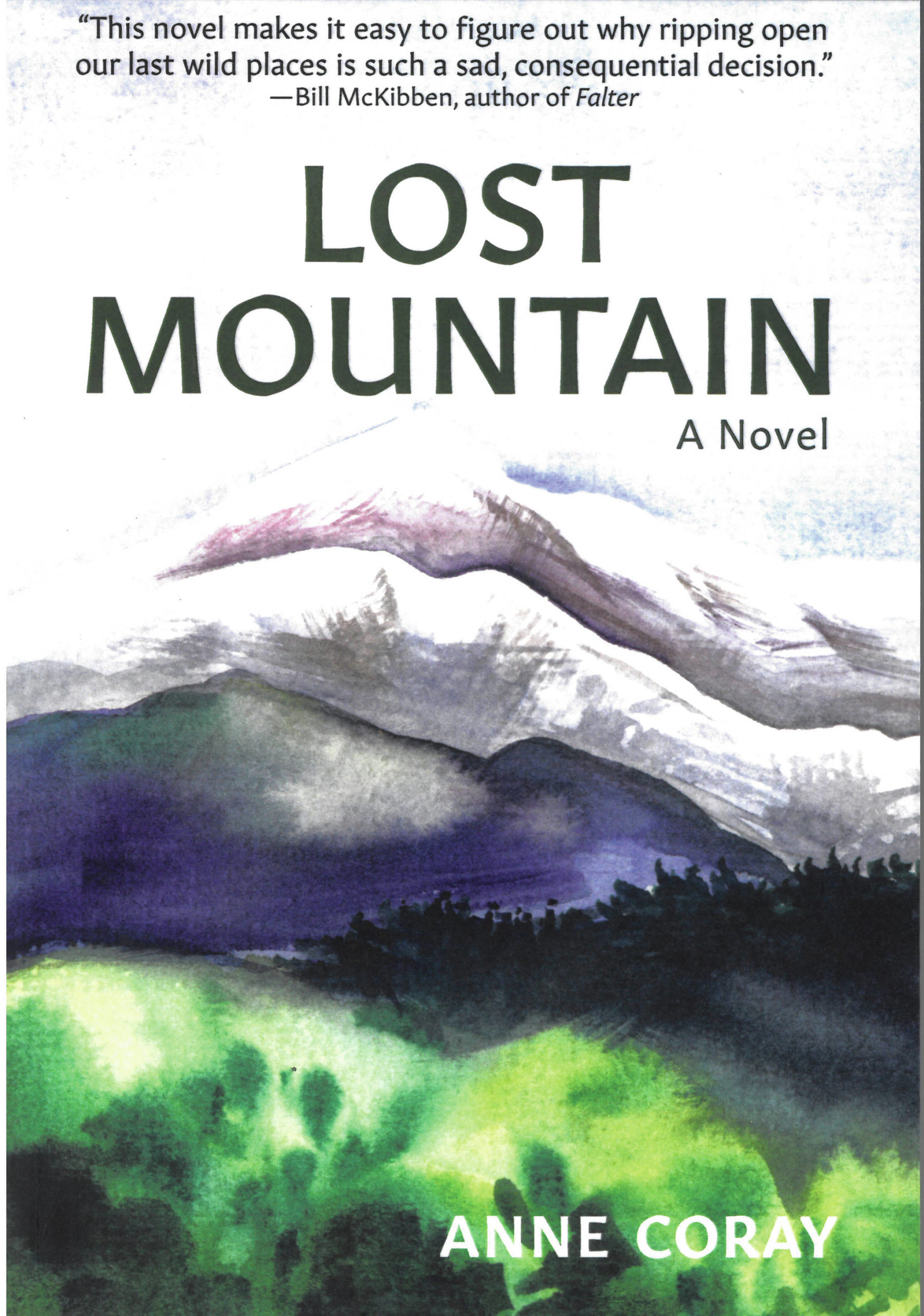By Larry Smith
For the Homer News
“Lost Mountain,” by Anne Coray (Alaska Northwest Books/West Margin Press, 2021, 289 pages, $16.99)
^
“Lost Mountain,” by Homer and Lake Clark writer Anne Coray, is a book from the geographic heart of the biggest Alaska mining controversy of the 21st century — so far. Coray knows the territory very well, as she was born and raised in the Bristol Bay uplands on Lake Clark. In this novel, she has created a community of creative spirits, an arts and crafts village which has many of the same concerns as Native villages in the region and some particular to a colony made for artists; she names it Whetstone Cove, Alaska.
Passions run deep here. Some are sensual, as in the carving of sculptures by the central figure, Dehlia Melven, and by neighbors who are pot-throwers, painters, musicians and writers. All are catering to fly-in tourists to pick up an expensive art thing or two on day trips from Anchorage. Between the making and the selling lies intertwined human sensual relationships, present, past and pending. These are working romances, hidden affairs, and even in the background a looming were-bear after-death stalking former lovers. The author has the needed past for imagining the passions of artists. Sometimes the work comes first, but at others, it is flung aside as artists fling themselves, limbs entwined.
Now comes the Ziggurat Mine prospect, like the better-or-worse real-life looming Pebble Mine. Folks figure where their personal and community advantages lie. Some will clearly profit just from the promotion: pilots flying geologists, and businesses receiving cash infusions, which appear to some to be bribes posing as grants. The basic questions abide: “Who is in charge of Bristol Bay?” Will art and subsistence living be swallowed by the needs of a giant mine? Will Whetstone become a comfort-town for mine workers, complete with establishments for gambling, alcohol, sex and drugs?
The remembrance of Front Street, Nome and of McCarthy close by the Kennecott Mine, is not so far past. There is Red Dog Mine, for example, where local hire was only achieved because it is on Native Corporation-owned lands. However, Ziggurat is to be on state land, which must comply with the U.S. definition of “resident” as anyone eligible to vote in Alaska — that is, a 30-day resident.
Coray emphasizes threats to fisheries from contamination of watersheds, but does not lay out the details of change. Natural sounds drowned by 24-hour ore-hauling, blasting, grinding and helicopter traffic are the by-products of big mining. Big money brings political influence in terms of asks by industry for state building infrastructure: seaport, airport, highway, bridges and power supply.
If it were Pebble Mine, the state cost might be $2 billion. Alaska, fortuitously, has the lowest royalties and taxes in North America, north of Mexico, according to the Fraser Institute think tank for mine development. That has got Northern Dynasty in a spot of trouble with regulators in Canada and the U.S., which has led to at least six class action lawsuits from investors who claim they were duped about the prospects for the Pebble Mine.
Coray’s creation, Ziggurat Mine, is not examined at that stage, and some hottish romances are not undangled in what I hope will be just her first novel based in Whetstone Cove. I care about her characters; her natural history observations are both sweet and sharp. The fate of the Cove and people of Bristol Bay is unknown. Whether the mine is the usual great Alaska scam preying on investors or could actually happen should be taken seriously. The peace and dignity of the region has been disturbed.

